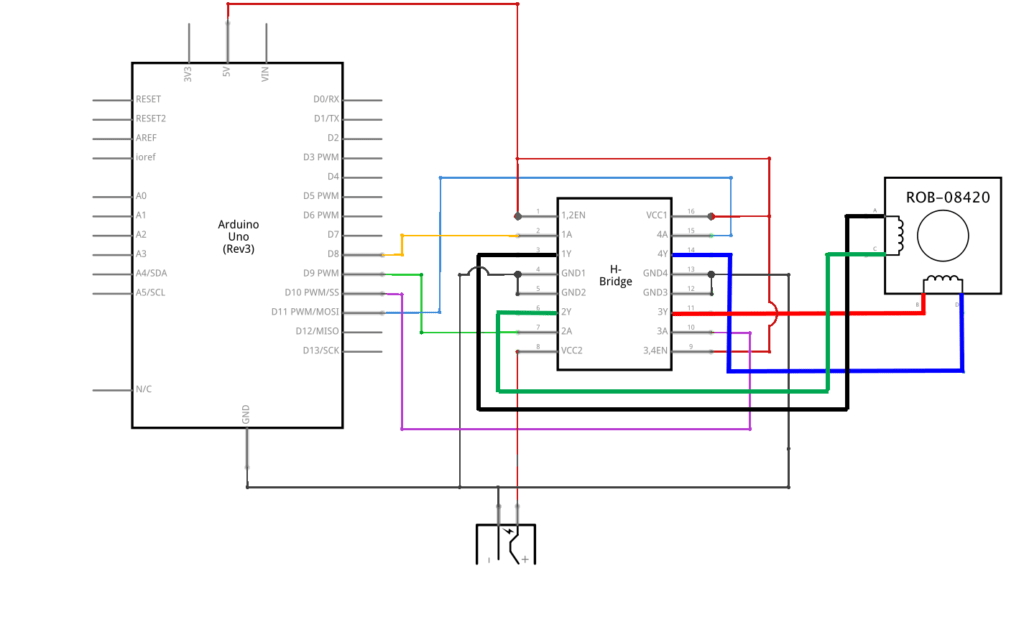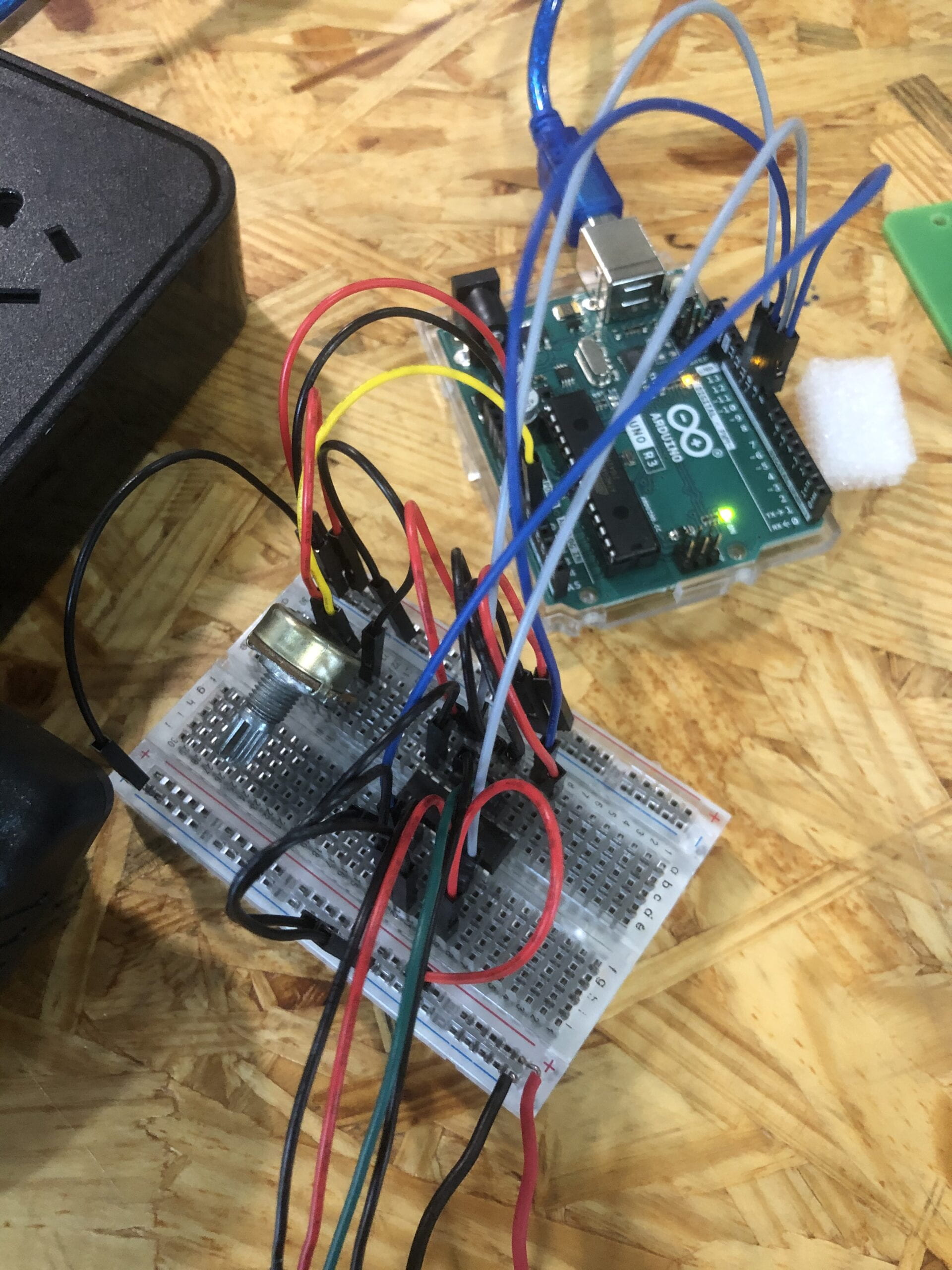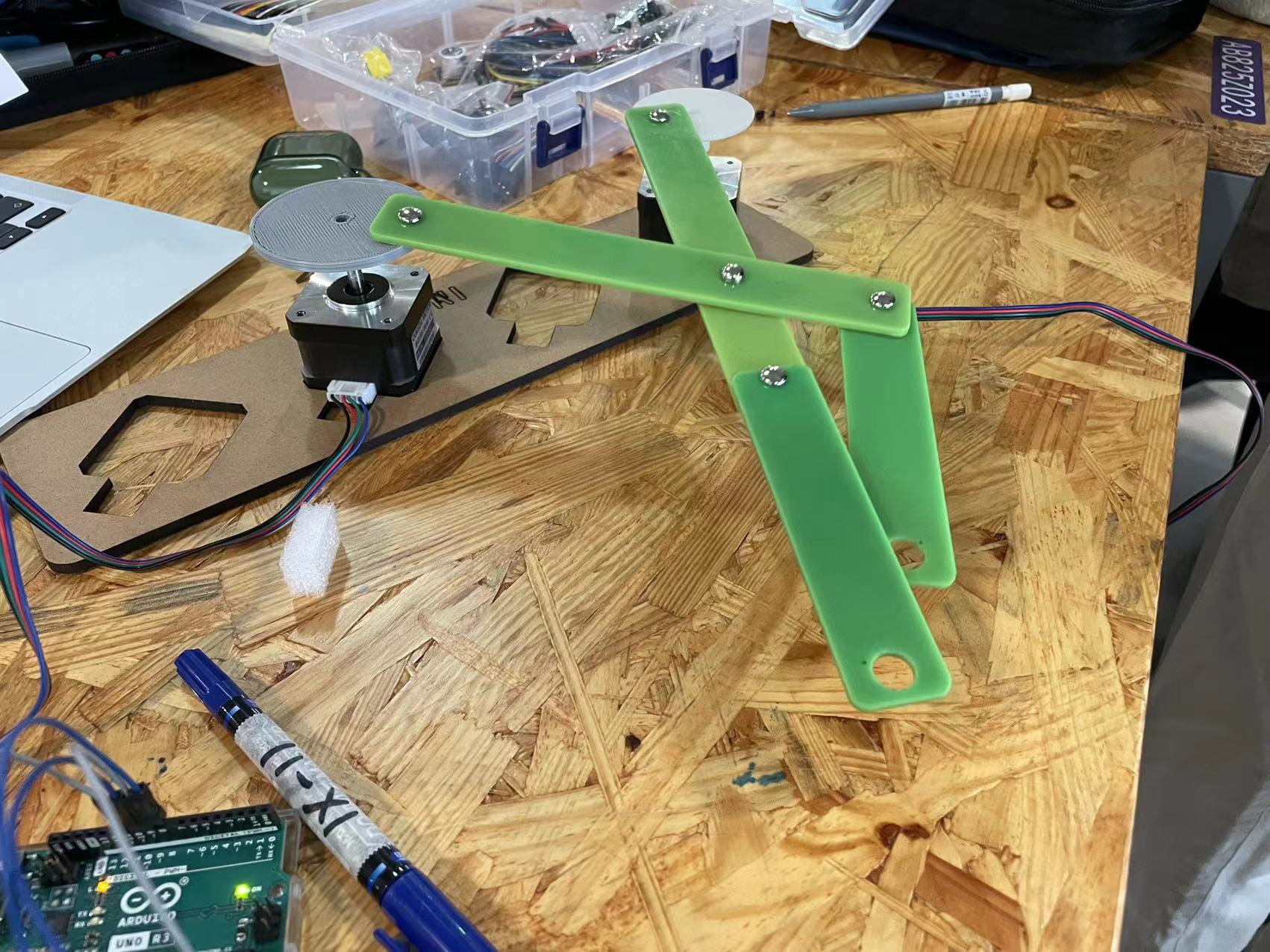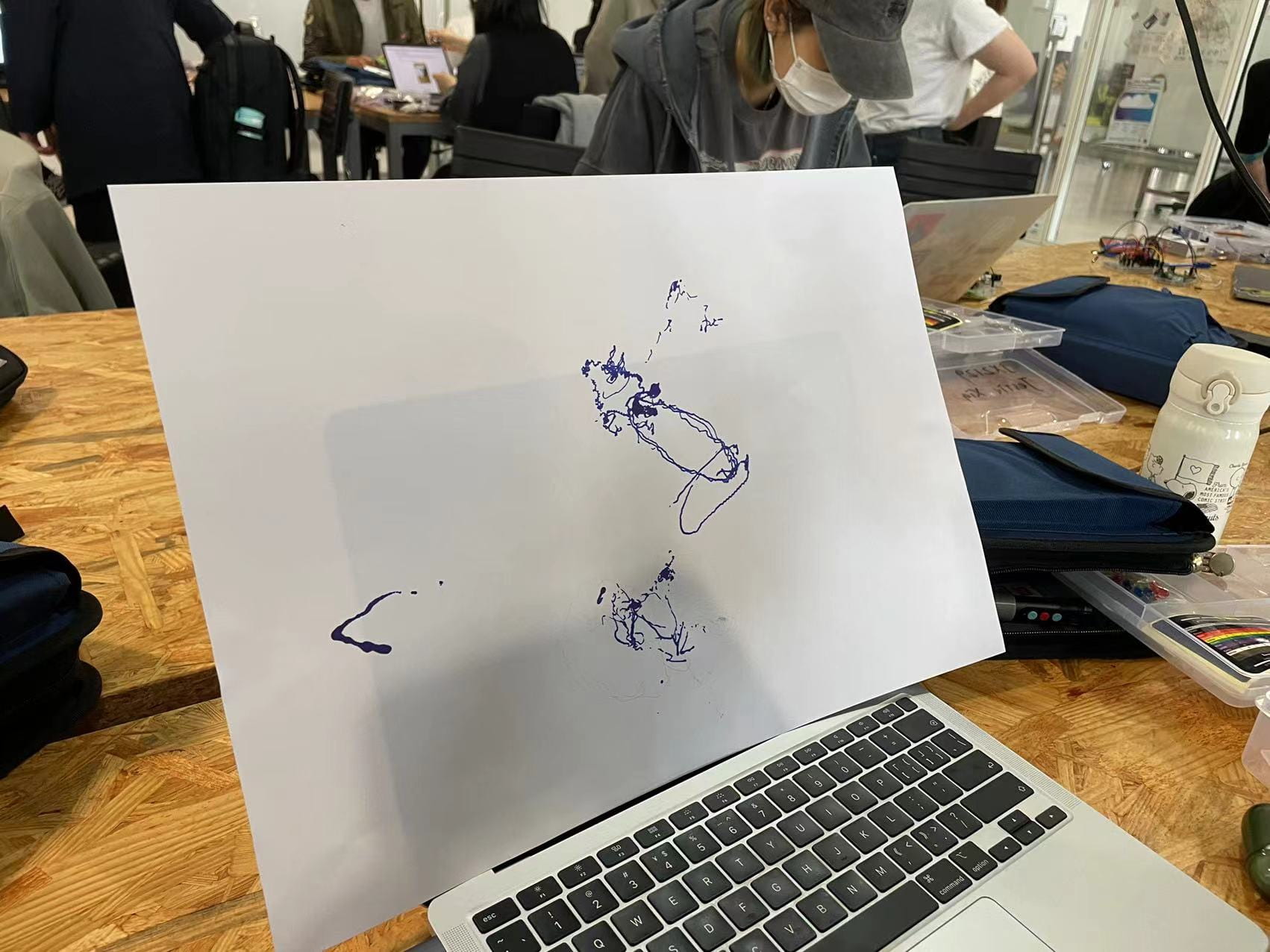Process
Step 1: Build a circuit


The circuit is complicated and my partner and I spent about fifty minutes completing two circuits because at first, we followed the wrong instructions and needed to build again. And when we test the motor, it didn’t work as the instruction showed and we were worried about that. At last, we found one of the wires was connected to the wrong place.
Step 2: Control rotation with a potentiometer
I met trouble when I need to add a map function to match the movement of the knob with the rotation of the motor. I didn’t know where I should put the function and I asked the learning assistant for help. We solved the problem at last. ( I forgot to record the picture of it. It was near the end of class and it was chaotic.)
Step 3: Build a drawing machine


We made the machine at last. But the motor is a little bit too high and the pen sometimes can’t draw on the paper. So we need to lift the paper and control the machine at the same time.
Question 1:
What kind of machines would you be interested in building? Add a reflection about the use of actuators, the digital manipulation of art, and the creative process to your blog post.
I am interested in building machines that can afford pleasure to people. I hope it is interesting not only in the process of using but also in the process of building. The use of actuators can be one important part of realizing this wish. The process of building an actuator is like creating human hands. It makes machines more like people. The process of constantly tweaking it through a program is like teaching a child, and it’s fun whether it’s done well or not. The digital manipulation of art is similar to that. It is a process of human taming machines, a combination of human emotional expression and rational machinery. The process itself is paradoxical and beautiful.
Question 2: Choose an art installation mentioned in the reading ART + Science NOW, Stephen Wilson (Kinetics chapter). Post your thoughts about it and make a comparison with the work you did during this recitation. How do you think that the artist selected those specific actuators for his project?
An enveloping chair made by London Fieldworks in collaboration with Dugal McKinnon, Gastarbyter combines hearing, touch, and vision and gives people a chance to focus on their feelings of being ignored in their daily lives and engage their senses. It’s quite different from the work I did during the recitation since my work pays more attention to controlling the machine and this work use actuators to control people’s feeling. I think when the artist selected specific actuators such as vibration machines, he may focus on the tactile parts he wants people to focus on and minimize the visual impact. And since people need to sit or lay on the chair, comfort and load-bearing also need to be considered.